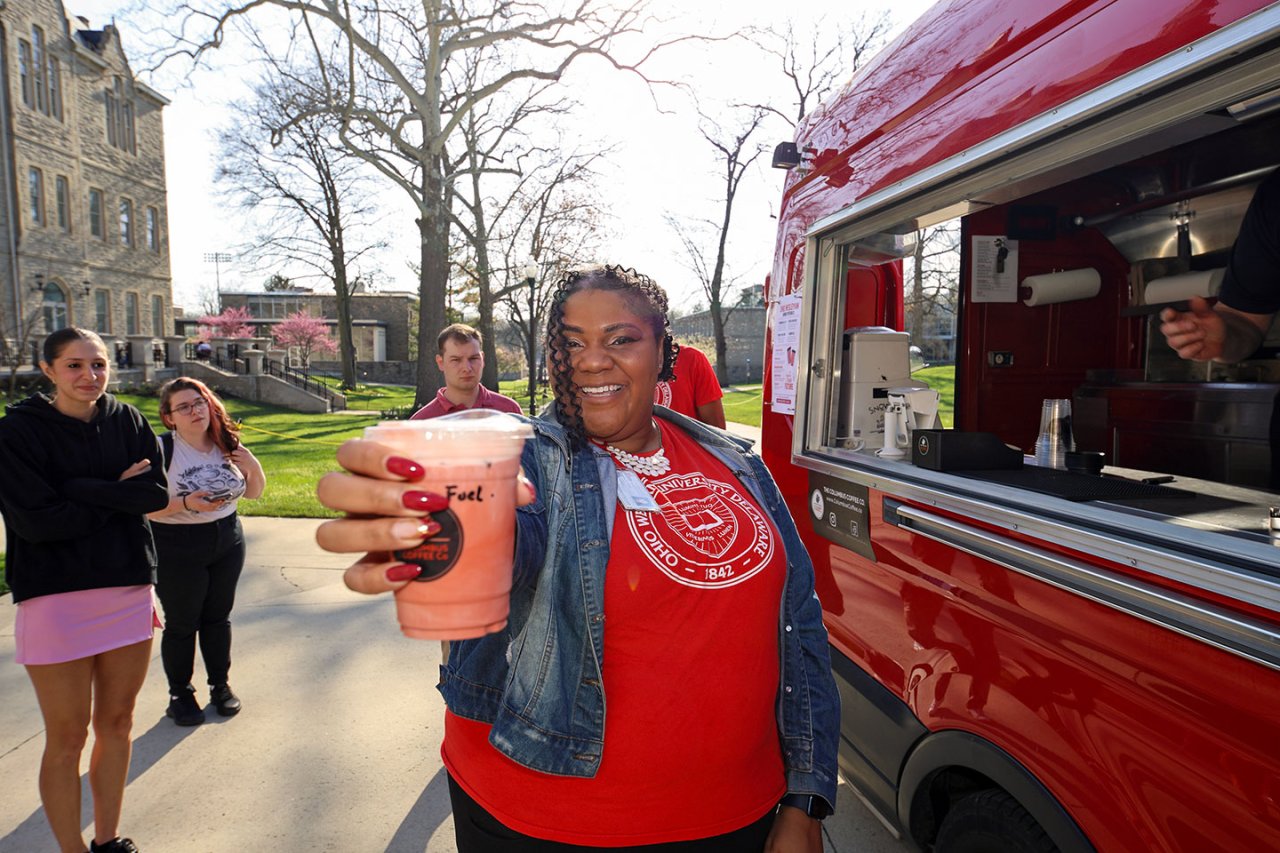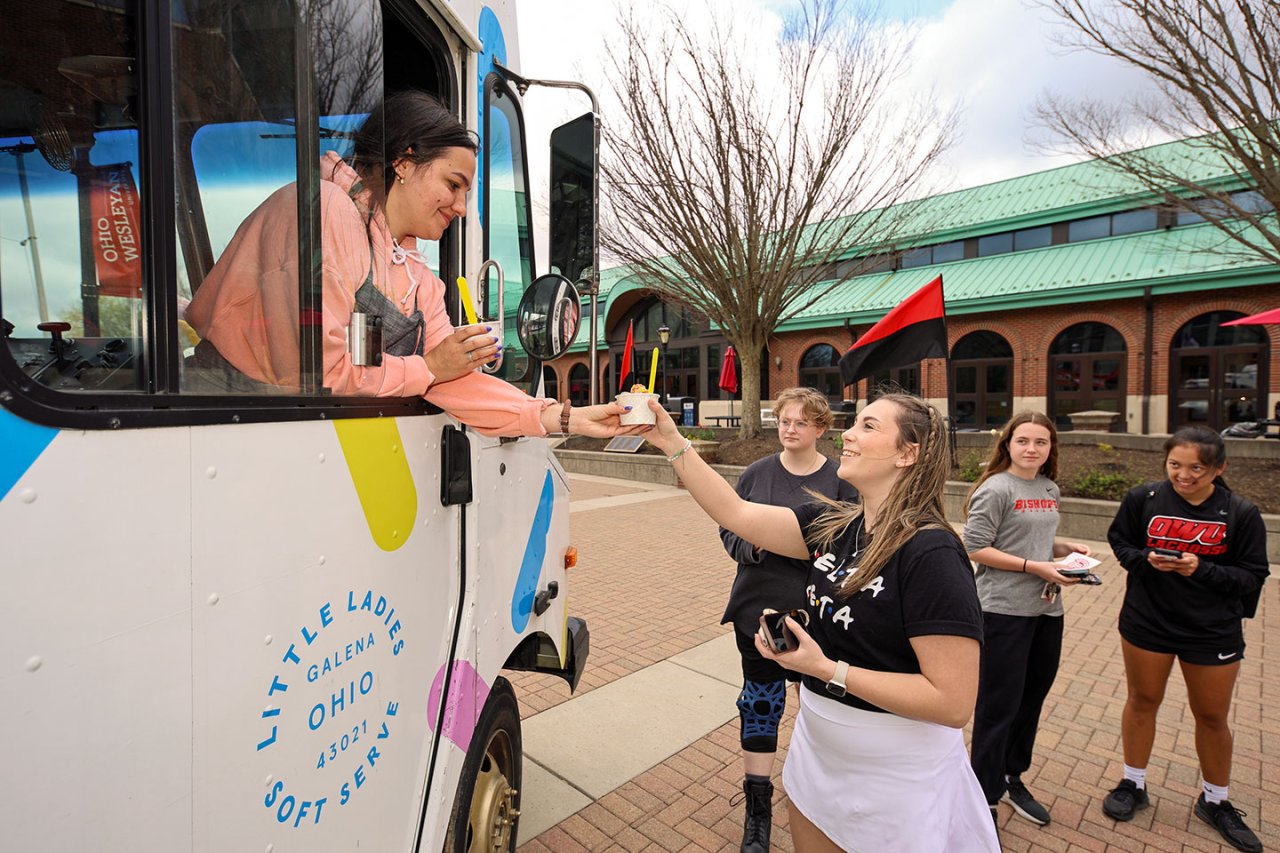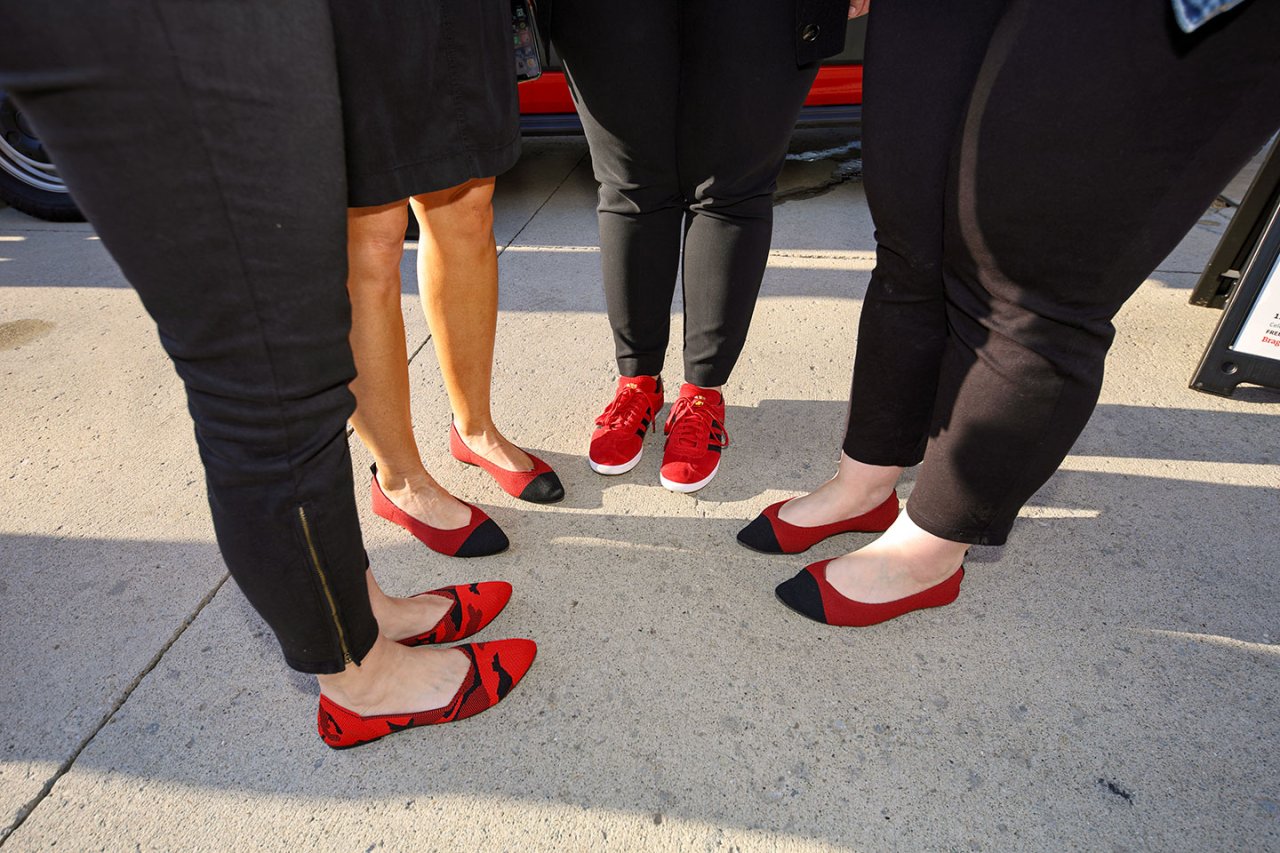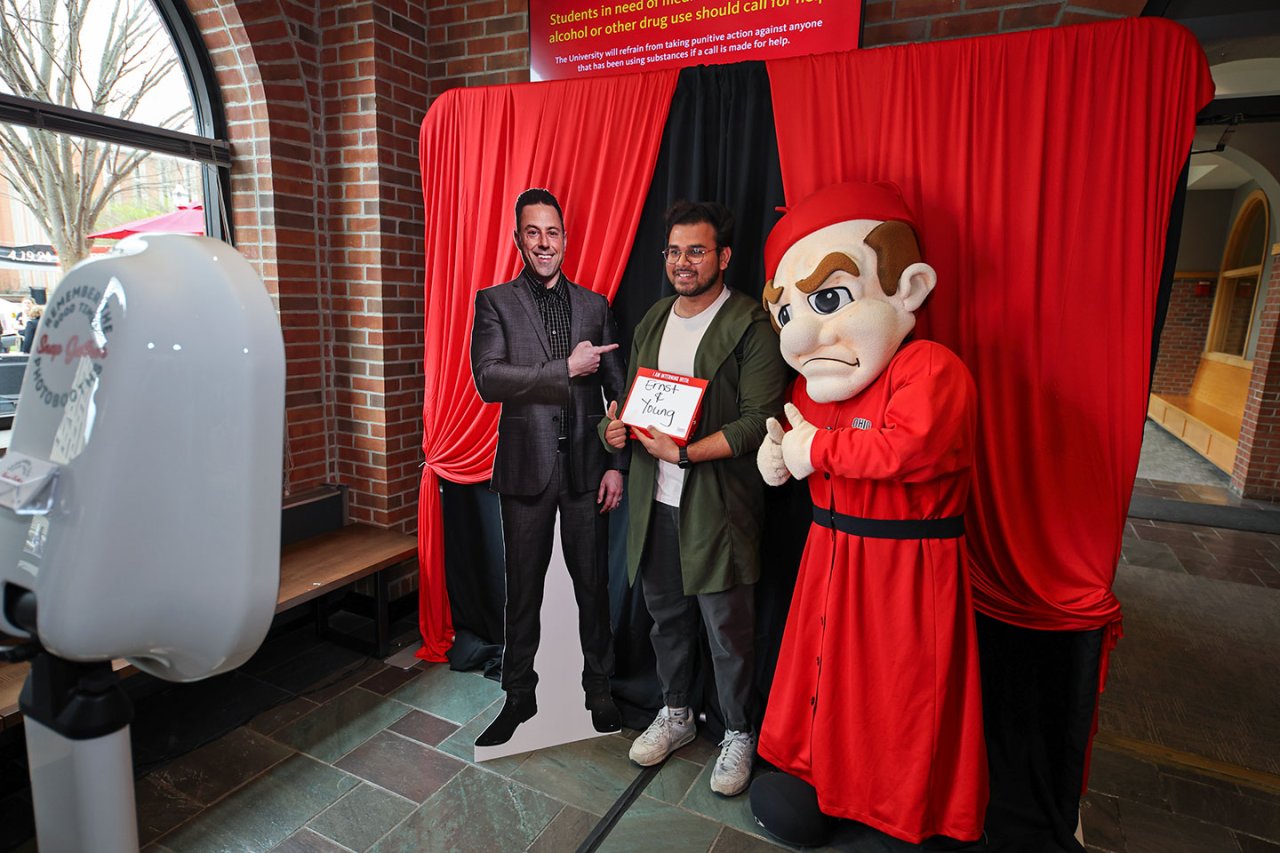What's in the Water?
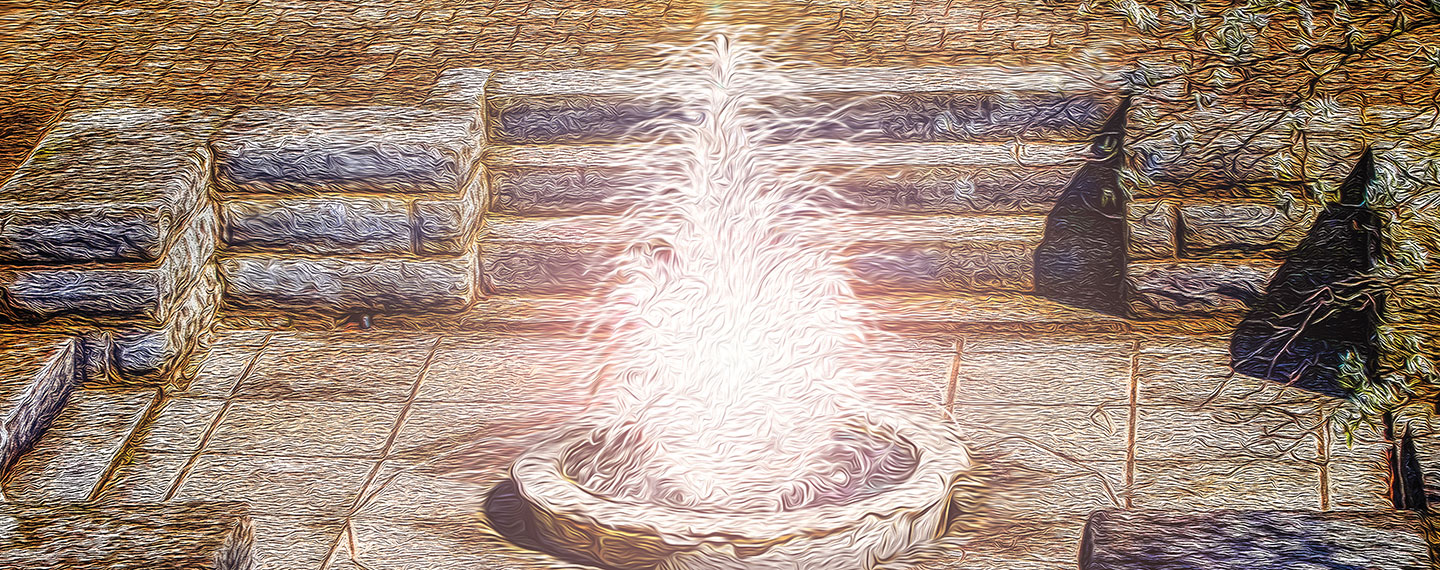
New President Reflects on OWU's Sulphur Spring Source to Launch Ohio Wesleyan's Future
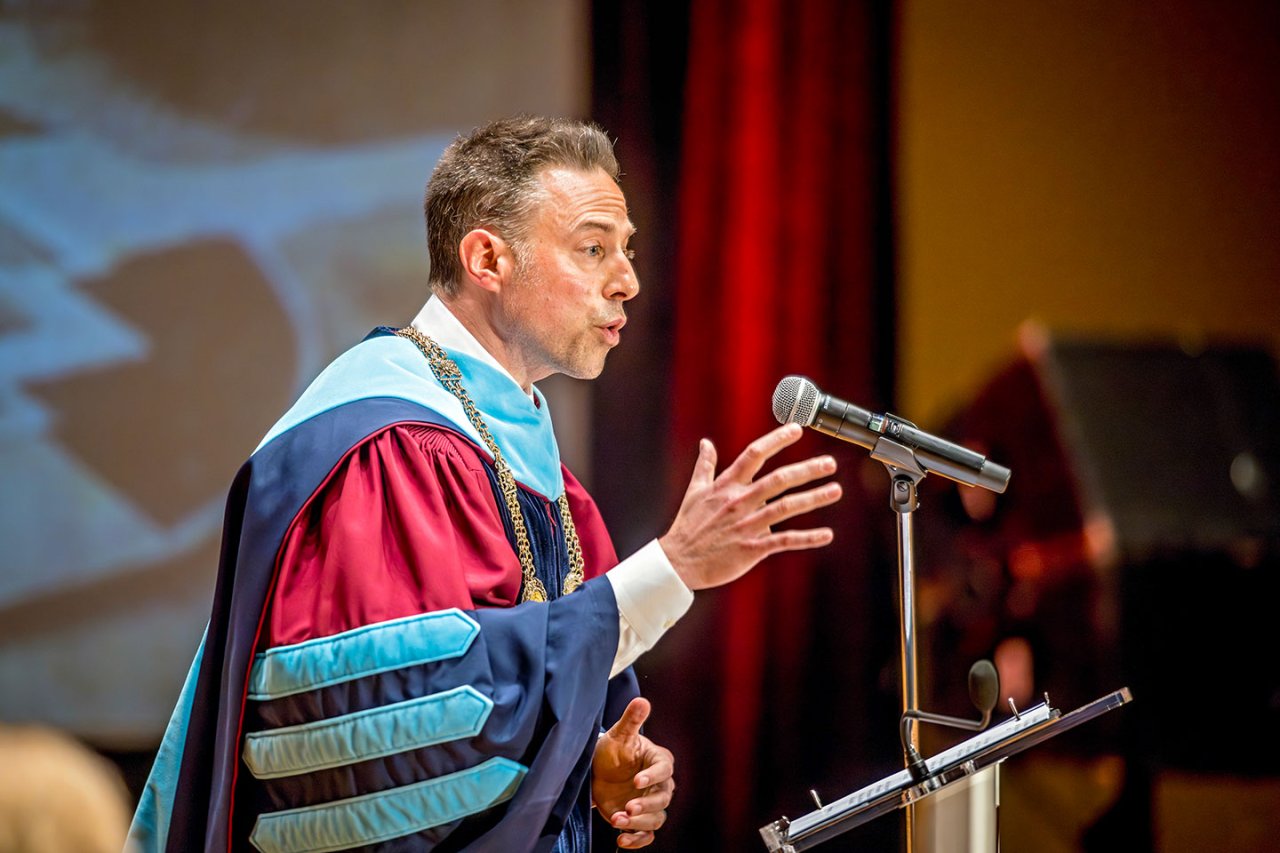
OWU's 17th President Matt vandenBerg invoked the Spirit of '76 and the Spirit of '42 as he called for a new OWU rebellion of kindness, boldness, and innovation in his April 19 inaugural address. He also created OWU history with groundbreaking announcements. An abridged version of his address is printed below:
Exactly 249 years ago today (April 19), in the early morning, a 41-year-old silversmith had already hastily mounted his horse and raced off into the mist. Shrouded in darkness and chilled to the bone, he sped through a labyrinth of muddy streets on the northern outskirts of Boston.
His mission? To warn his neighbors of an imminent attack. The British were coming, and their intentions were clear: to extinguish the spirit of rebellion smoldering in the hearts of the colonists.
Aided by a pair of lanterns at the Old North Church and other riders, Paul Revere alerted the militia to the impending attack. The British would soon detain Revere, along with John Hancock, Sam Adams, and others, but not before they'd successfully mobilized the countryside.
April 19 brought us that legendary Midnight Ride. April 19 witnessed the Shot Heard 'Round the World. On April 19, the Battles of Lexington and Concord ignited the American Revolution.
Of course, historical events are often rife with misconceptions. And as our distinguished history colleague, Barbara Terzian, teaches, Paul Revere's ride features one such myth. As it turns out, he did not, as it's commonly reported, repeat the phrase, "The British are coming."
Why, you might ask? Because that simply wouldn't have made sense. In those days, the colonists still saw themselves as Englishmen. So, for someone to warn them that "the British are coming" would be like telling someone in Ohio, "The gray clouds are coming!" It's like: "OK. We know. And why are you shouting?"
What Paul Revere actually called out as he catalyzed the rebellion was this: "The Regulars are coming." The term "Regulars" was a reference to the formal Redcoat-wearing troops, as opposed to their own local citizen-soldiers. So, for our nation's founders, the enemy was "The Regulars."
Higher Ed Challenges
Nearly two and a half centuries later, much of higher education finds itself at odds with a very different type of "Regulars." Not one of military form, nor one that wears a redcoat. In fact, the Regulars we face now aren't even human. While a bit of a nebulous concept, the modern-day Regulars we face today are still dangerous.
The Regulars of today come in the form of a general malaise, a defensive posture, and a stasis that has consumed our industry slowly, yet steadily, through decades of mounting pressures.
The Regulars are a scarcity mindset born from years of cutbacks, pullbacks, and setbacks.
The Regulars are a reluctance to adapt and a form of muscular atrophy that comes from doing the same things repeatedly but expecting different results.
To say these are difficult times for higher education is an understatement of epic proportions. You might say that goes double for small, private residential liberal arts colleges. We're buried under an ever-growing pile of concerns—from soaring inflation and price sensitivity to questions about the value of a degree, declining enrollments, political rancor, brinkmanship, and calcified financial models. We're mired in a national retention and graduation crisis, and students need more and better help than colleges sometimes have to offer. Take, for example, America's growing mental health epidemic and our industry's collective response. We're bringing a squirt gun to a forest fire.
Meanwhile, a dramatic erosion of empathy and widespread reluctance to engage in constructive dialogue plagues the entire nation, and it certainly hasn't spared higher education. As a society, we're deeply polarized. We increasingly identify only with our own political and cultural tribes. We find ourselves far less willing to engage with those who hold different views. We too often blame each other for our problems when instead we should find common ground, leverage our diversity as a strength, and rally in unity toward solutions.
Coping Mechanisms
As a sector, the responses of many liberal arts colleges to the Regulars of our time have hardly been inspired or effective. Far too many institutions have fallen into a trap of unhealthy coping mechanisms, like cutting our budgets to the bone and hoping to save our way out of repeated crises. Sometimes we do the opposite and keep stretching and flexing and adding programs to try and be all things to all people.
But ultimately, all these things do is dilute our missions and leave us feeling less certain of who we even are.
Paradoxically, we yearn for recognition. We decry how we're "everybody's best kept secret." We lament how more people would love us—if they just got to know us. And not coincidentally, we all use the same cliches to try and recruit students—like small class sizes, faculty who really care, experiential learning, and alumni successes. Everyone who's been on a college tour recently knows they all sound the same. You know, Regular.
So, how should we engage our modern-day Regulars? What is the path to real rebellion? How will Paul Revere know where to find us?
OWU's Distinction
Thankfully, we don't need to look far for answers. For all you Bishops in the house, let me tell you something you already know: OWU is astonishingly gifted at helping 18-to-22-year-olds find their way—to answer the all-important self-discovery questions during the most formative stage of their lives—the questions that test assumptions and surface the truth. What am I good at? What gets me out of bed in the morning? What's my role in creating a better world?
We have the perfect opportunity to learn from our own successful approach with students—to take a page out of our own textbook. We have the chance to ask ourselves the very same existential questions, even if they're tough.
What makes us truly distinctive? What can students get at OWU that they won't, or they don't, or they can't get anywhere else? How do we align our resources and energies so that those distinctions truly shine?
In other words, at Ohio Wesleyan University, "What's in the Water?"
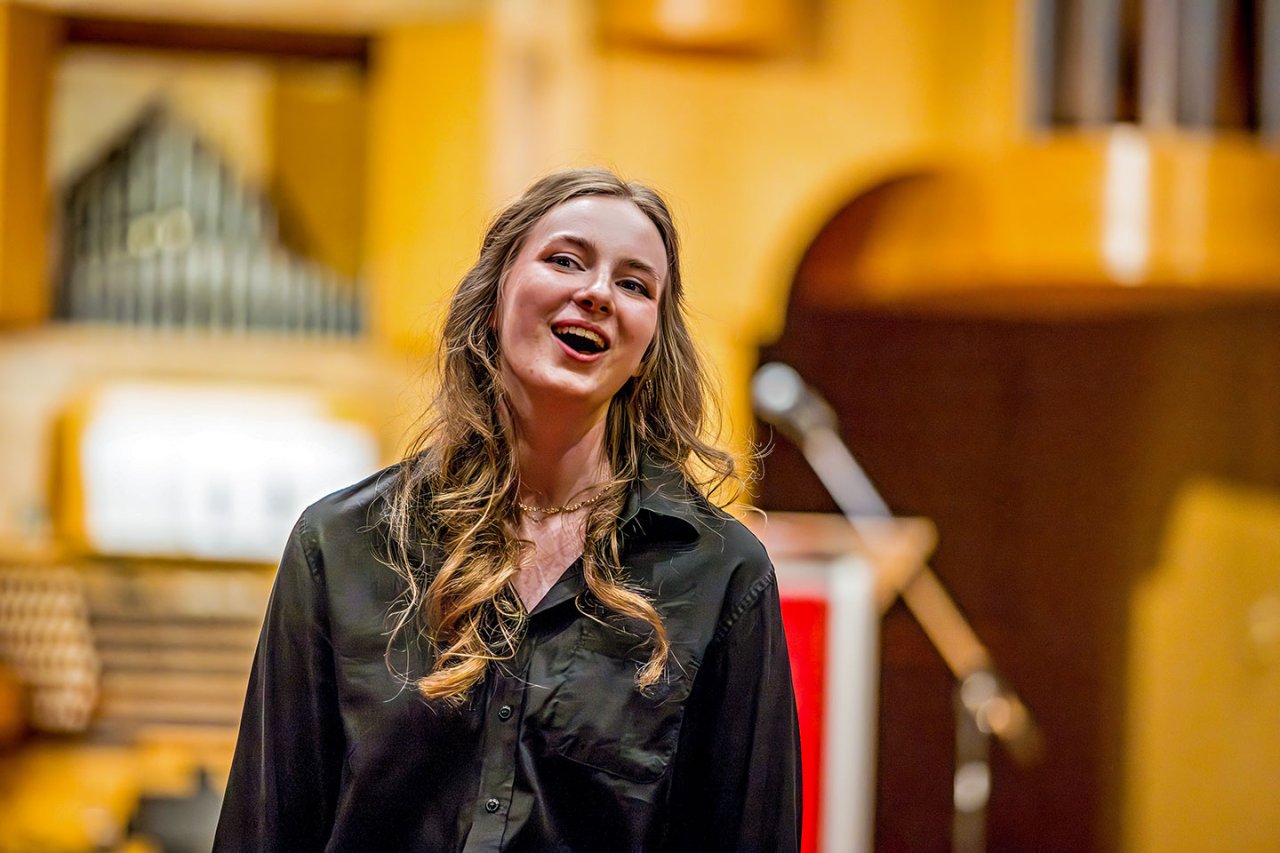
As you gleaned from the song, Ohio Wesleyan's story is indeed grounded in water, and it's propelled by the elements of vision, innovation, community action, and grit.
Long before the arrival of settlers, this land belonged to herds of roaming buffalo and to Native American tribes like the Mingo, Shawnee, and Lenape, who referred to the Sulphur Spring as "Medicine Waters." Ever since our birth, and in our most natural state, we are a place of healing, rejuvenation, and replenishment.
It was the late 1820s when landowners donated this tract to the Village of Delaware. Within a handful of years, developers sensed commercial potential and built what was then called the Mansion House Hotel right on this very spot. It was a resort—and one of Delaware's first major financial endeavors.
After a series of fits and starts, the business failed. Yet, where many saw disappointment, one saw destiny. The Methodist minister—a visionary named Adam Poe—dared to dream big. He was aware that the two Ohio conferences of the Methodist Church were seeking a spot for their new college. He knew his community needed that college.
Believing the Mansion House Hotel could be the deal clincher, he convinced the building's owner to sell it at a discount. He took out a personal loan, and just like what Paul Revere had done 66 years earlier, he went door to door activating the countryside in grassroots fashion.
This community responded in force to their Revere; 172 Delawareans, $10,000, and one deed later, Poe gifted the hotel and land to the church.
He then invited the church's exploratory committee for a visit to inspect the building, and I have to imagine, he sat down the night before, and he prayed his plan would work. Well-researched though the move was, it was the risk of a generation. It was a rebellion against the status quo. And it wasn't his, alone. He had rallied everyone he knew—and then some—all for this dream.
Imagine the joy and the sheer relief Adam Poe experienced when Dr. Charlies Elliott—the future namesake of the Mansion House Hotel—shook his hand and said, "Dude, let's totally do this." I might be paraphrasing.
Adam Poe and this community crafted a magnificent vision. They created a pathway and surmounted the obstacles. Working in unity, they willed their way to the future of their dreams.
So, when all these years later, we stare down the Regulars of our time and ask ourselves the existential questions, that story is what's in our heads. That is what's in our hearts. That is what's in our water.
But don't just take it from this newcomer. Take it from OWU graduate Branch Rickey, who broke baseball's color barrier when he signed Jackie Robinson to play for the Brooklyn Dodgers.
Take it from Willa Player, another OWU grad and Civil Rights activist who was the first Black woman selected as president of an accredited four-year college.
Take it from OWU's Wendie Mallick, the famous actress and model who fights for affordable housing, the environment, and animal rights.
Take it from the University of Michigan's football team, who lost 17-7 to OWU on our most recent trip to Ann Arbor. OK, fine, it was 1928. It's not our fault if they refuse to play us again.
Take it from 40,000 alumni and countless more to come.
Just like our graduates, OWU soars because we lead with vision, innovation, action, and grit. Because we're willing to risk all that we have so that all can have more. Because we work in unity not just for the sake of making a better OWU, but for the sake of making a better world through OWU.
And just in case we don't yet feel sufficient inspiration, consider this:
For centuries, our Sulphur Spring has ebbed and flowed. Years ago, it finally dried up and disappeared. But this academic year brought something different. Our colleagues and students in Environment and Sustainability found that long-lost spring. The campus icon of Ohio Wesleyan University is back. Hope, it would seem, still springs eternal.
So today, it's with the full-blown winds of inspiration and moxie at our backs that we embrace true rebellion against our modern-day Regulars:
- We rebel against the forces that tend to divide institutions, pitting faculty against administrators, college against community, and students against each other.
- We rebel for offering understanding, sharing grace, and building unity.
- We rebel against the myth that the liberal arts are irrelevant and against the false dichotomy between the liberal arts and workforce development.
- We rebel for a fresh, dynamic, and innovative delivery of the liberal arts—a model that's needed now more than ever.
- We rebel against the scarcity mindset and political controversies that fuel fear, that cloud vision, and that distract us from our greatest purposes.
- We rebel for taking measured risks, for expanding educational access, and for strengthening our culture of belonging.
And as we lean in to our rebellion on this day, let's not just remember our history. Let's not just invoke history. Let's make history.
Our Rebellion
And let's do that right here, right now, beginning with an investment in our most precious asset: our people.
It's no coincidence that the healthiest organizations are usually the ones that demonstrate care for their people. And budgets are a reflection of priorities. "Show me an organization's budget," so the saying goes, "and I'll tell you what they really value."
OWU's faculty and staff have proven their investment worthiness for many years—the last handful in particular: COVID, a reimagination of our curriculum, program and administrative reviews, a faculty handbook overhaul, student success initiatives, and even an on-the-dime transition to a distributed library system this year.
To my colleagues, I say this: I see your efforts. I hear your aspirations. I share your goals.
Investing in our people will be a fundamental priority for Ohio Wesleyan University during my time as your president. In the coming months and years, we'll set meaningful goals for compensation, professional development, work-life balance, and more. Together, let's dream big, and let's define and pursue what it takes to make OWU a premier employer in our state.
After consulting with the board, cabinet, and faculty and staff leaders, I'm pleased to share two small steps in the right direction, both focused on retaining and rewarding talented individuals who show drive and deliver performance.
In the next academic year, OWU will double merit award amounts for faculty members, and these amounts will stack on top of cost-of-living adjustments. OWU will make a similar, commensurate investment in merit awards for staff.
If you would, please join me in thanking the board, cabinet, faculty and staff leadership, and especially VPs Mike Bruce and Karlyn Crowley for their leadership.
Teaching, Learning, & Innovation
We recognize the need to support faculty as they help us to cement our status as a model university for teaching excellence, hands-on learning, holistic advising, and student success. Our faculty deserve the best available resources and tools to develop new pedagogies, explore curricular innovation, leverage AI and other technologies, and navigate evolving classroom dynamics.
For years, Ohio Wesleyan has been the only institution among the Ohio Five without a full-time, dedicated professional leading our efforts in this work. That status is now officially obsolete.
This morning, thanks to the vision of our provost, Dr. Karlyn Crowley, and thanks to the requests of many faculty colleagues, we're proud to announce the launch of OWU's Center for Teaching, Learning, and Innovation and the creation of an endowed director to lead our efforts.
The national search for our inaugural director for the Center has concluded successfully. Although she hasn't started yet, our new director joins us this morning. Dr. Barbara Bird, please rise so we can welcome you to the OWU community.
First-Gen Leadership
This December, the industry publication Inside Higher Ed featured the tremendous student success story unfolding at OWU. In just two years, we've seen a 6 percent rise in first-to-second-year retention. Retention for returning second-years is now 84 percent, and for third-years, it's 94 percent.
If the increasing media attention and calls I receive from fellow presidents are any indication, OWU is developing a national reputation for its pioneering, allhands- on-deck work in student success.
This is also increasingly the case with our first-generation college students, a population for whom retention is up 10 percent in the last two years, a testament to Drs. Paul Dean, Dwayne Todd, Brad Pulcini, and Phokeng Dailey, along with Doug Koyle, Jason Timpson, and many more. It's also increasingly the result of the leadership of Thea Smekens, who leads our first-generation student success office.
Numerous families have fueled this progress through visionary philanthropic support. They include the Newtons, Palmers, Eastwoods, Shipps, and more.
OWU has the tools, the expertise, and the momentum to be the change that first-gen and underserved students need from higher education. With the wind at our back, we'll set out to become a premier destination in the U.S. for first-generation college students.
In recent months, OWU has received two significant investments that further catalyze our work. We're grateful to 1973 graduate Shirley Paden-Bernstein for her gift of $1 million and to 1992 graduate Kathrine Grissom for her commitment of $2 million.
Hamilton-Williams
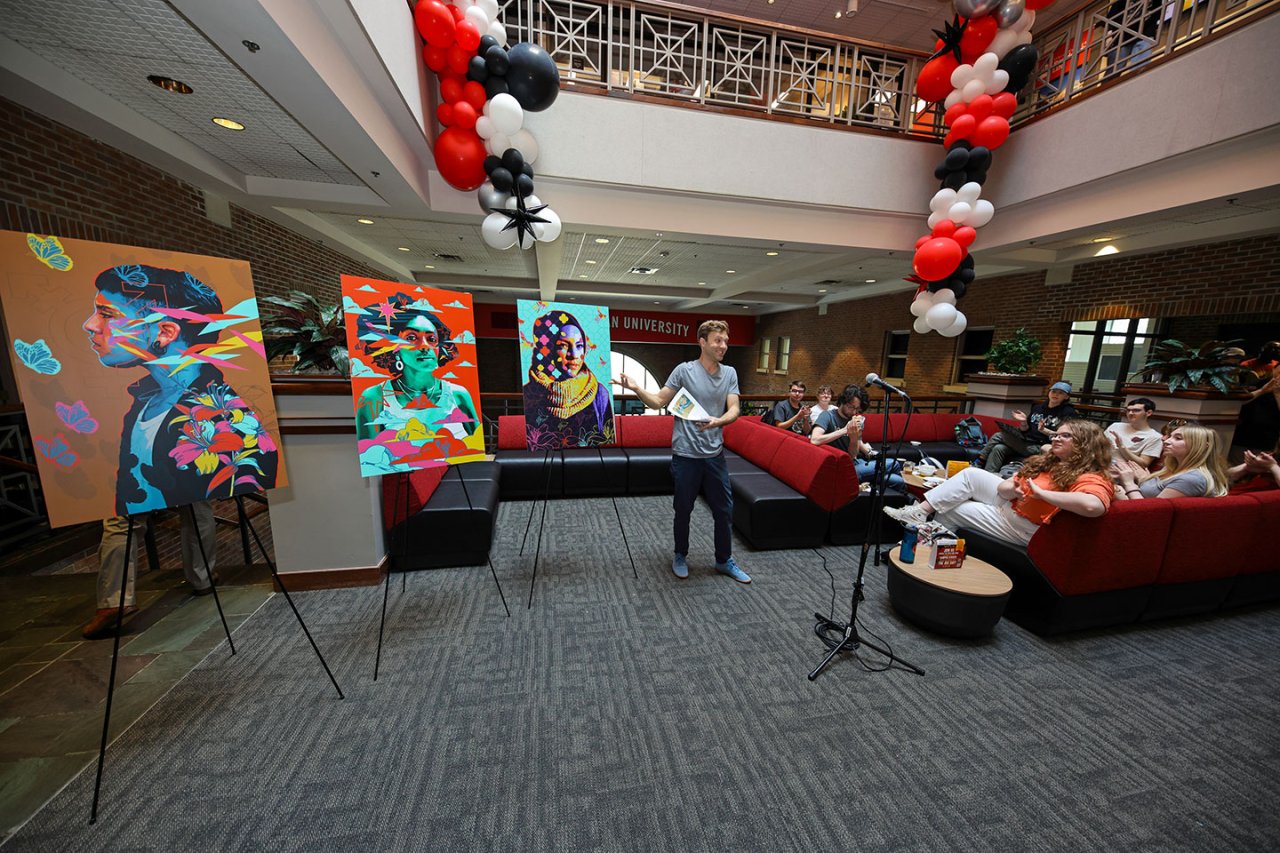
College is far more than instruction and class time. Done well, it's a transformative experience, so it's with great intentionality that OWU requires most students to live on campus for all four years. A great deal of learning occurs outside of the classroom, and that time spent outside of class needs to be connected and fun.
During my listening tour, I learned how grateful students are for the many planned events, activities, and concerts OWU provides. Yet, students have also been clear that existing campus facilities do not sufficiently accommodate spontaneous and informal gatherings and fun. We're taking that problem head-on.
On Monday, we dedicated our newly transformed lobby in the Hamilton-Williams Campus Center. Thanks to the generosity and hard work of many, one of the most popular student hangouts on campus has become a modernized, comfortable place of belonging for all.
Please join me in thanking Dawn Chisebe, Dwayne Todd, Sara Stuntz, the Student Engagement and Success Team, the President's Circle, the Advancement Office, and many others who made this possible.
Student Hub
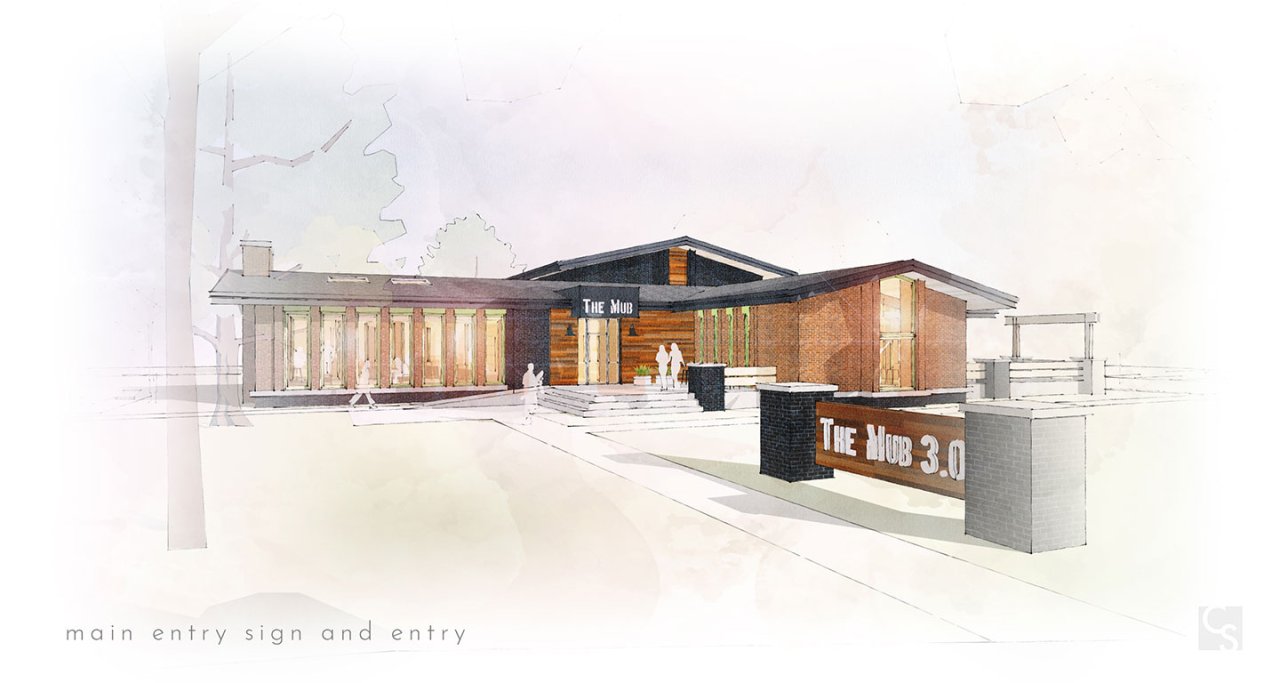
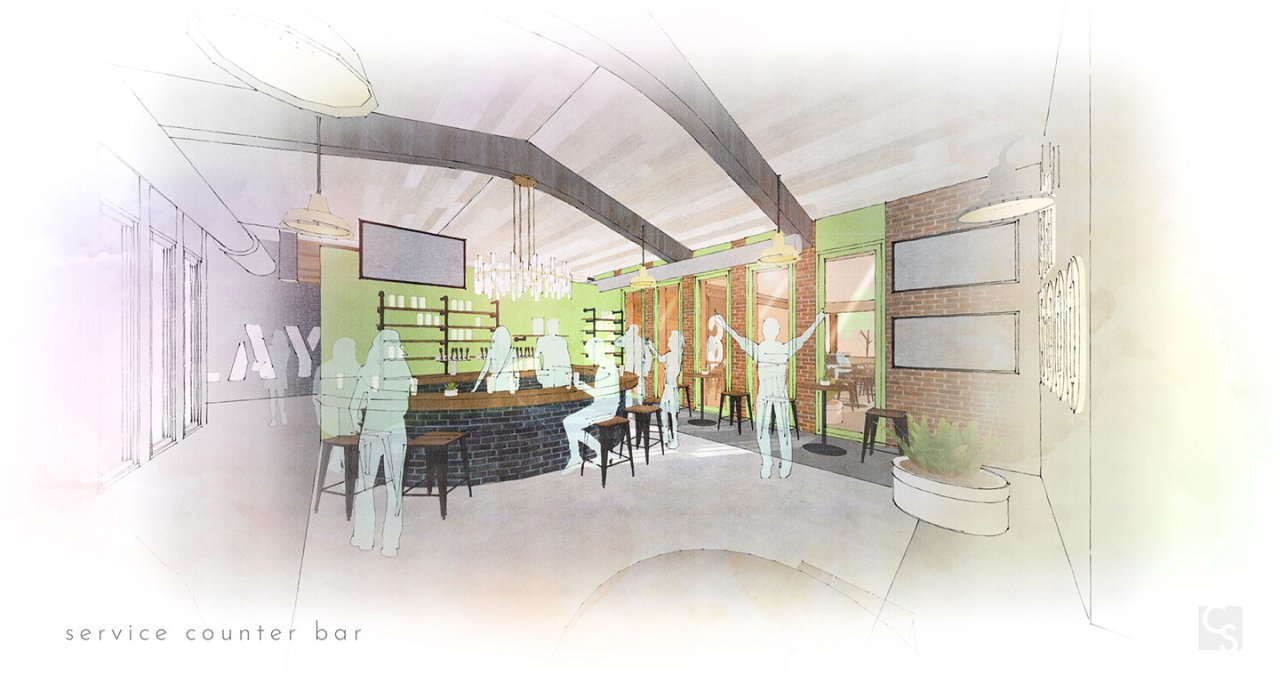
Dwayne Todd, his Dean's Council, and student leaders worked for months to create a plan to make OWU a more intentionally fun and engaging campus. From that work, and through my listening tour, we heard repeatedly that OWU needs a designated place where all students, regardless of affiliation, can hang out, relax, and build community—on their own terms.
For alumni, think about your experience and imagine a rebirth of your favorite gathering places: the MUB and the Grub-Pub!
Situated on Fraternity Hill at 4 Williams Drive is the old Alpha Tau Omega house. It's served a number of purposes, and recently, it's been empty.
The Dean's Council, student advisors, and our architect imagine an impressive renovation. It would be the ultimate student hang-out, with lounging space, indoor and outdoor games, patios, space for TV and music, and more. And, for students of age, a safe and responsible place to enjoy a beverage.
Unfortunately, there's a problem, and it's a big one. The building needs intensive work to get the concept just right. It's a tall task and will take $3 million.
Thanks to an anonymous donor—OWU grads who I know are watching right now on livestream—that problem is now resolved. I'm overjoyed to share on their behalf that OWU's new student social hub— designed by and built for students—is now fully funded, and construction planning starts immediately!
Entrepreneurship
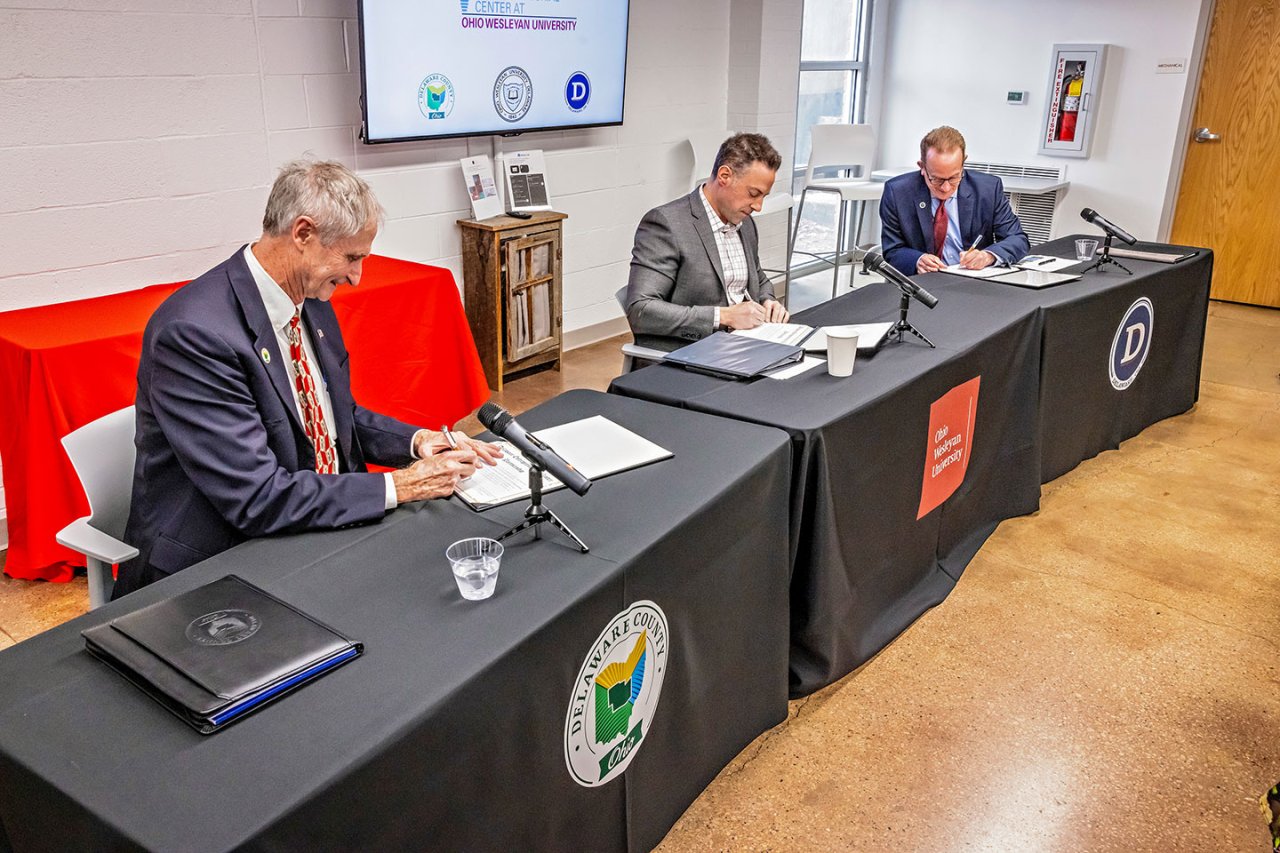
The Delaware Entrepreneurial Center at Ohio Wesleyan University, or DEC for short, is a first-in-kind liberal arts business accelerator. It's the first such partnership in the United States between a city, county, and educational institution. Founded in 2018, it helps budding entrepreneurs connect with talented OWU students who help in various ways.
Since inception, the DEC has graduated 11 companies, added 45 new full-time jobs to the local tax base, and attracted $3.7 million in investments.
It makes sense for this work to happen here, in Delaware—a community known for innovation and for transforming a failed hotel into a university. It also makes sense to keep charging ahead—because that's what entrepreneurs do. In the months and years ahead, we'll cement our role as a hub for innovation and a home base for founders—not only for Delaware, but for Columbus, Ohio, and the United States.
On Tuesday of this week, we announced a bold new business plan competition open to entrepreneurs of all ages across the world. With a pool of up to $250,000, I'm pleased to share that the DEC is now home to the largest business plan competition in the entire state of Ohio!
Please join me in thanking the City of Delaware, Delaware County, Megan Ellis, Steve Flaherty, Phil Smith, and everyone else who made this possible!
Columbus State Community College
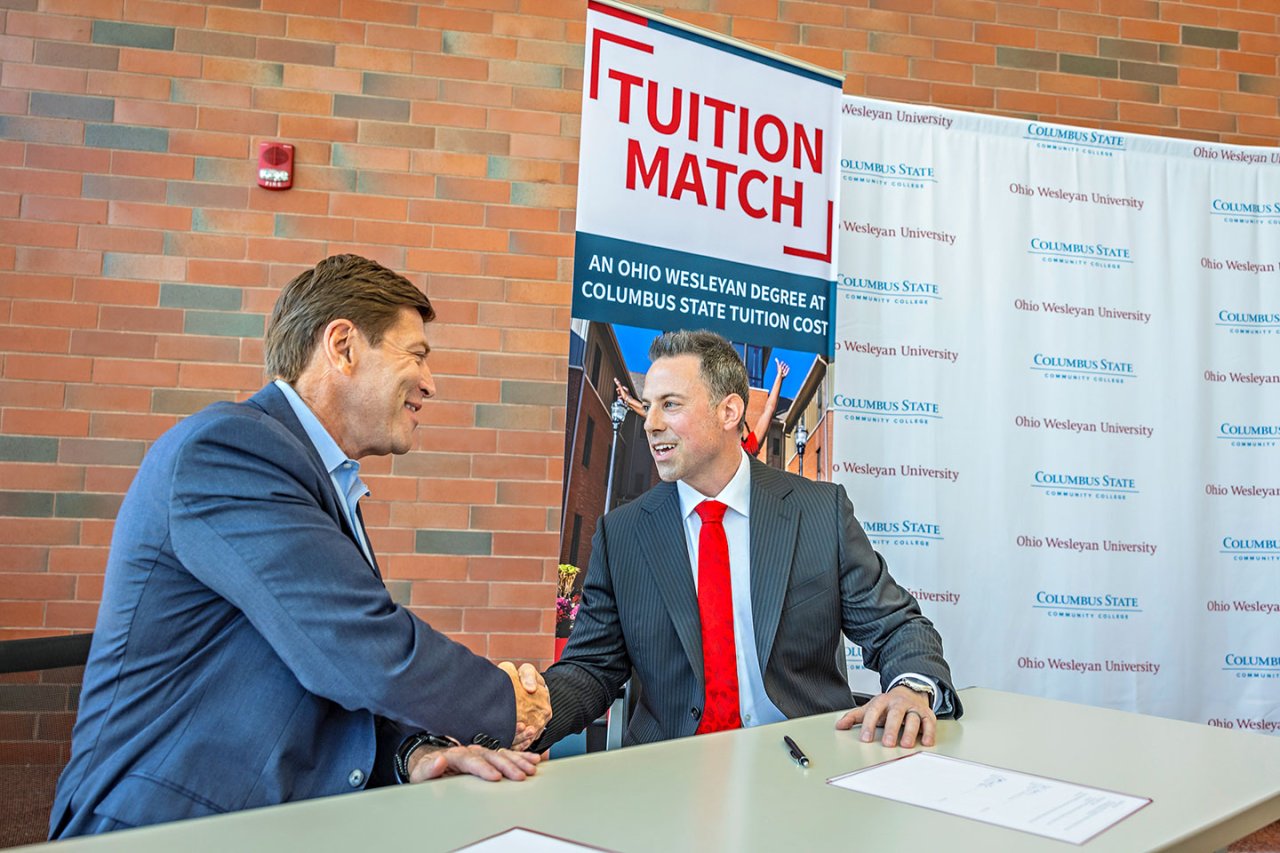
When institutions with complementary abilities and resources toss aside competitive instincts—and instead collaborate—barriers break and lives change. In Columbus State Community College, OWU has found a kindred spirit that shares many of our biggest goals.
Yesterday, on the Delaware campus of Columbus State, and after months of work by our teams, President Dave Harrison and I signed a landmark agreement—a three-part partnership that we hope will establish a new paradigm for how our types of institutions work together:
- Part 1: Thanks to our new 2+2 Preferred Pathway, qualified Columbus State graduates can now enroll at OWU with junior status in their major with a clear path to a bachelor's degree for an incredible 20 majors.
- Part 2: Under our first-in-kind Tuition Match Program, up to 25 Columbus State graduates per year who've earned a 3.5 GPA or higher will pay the same exact Columbus State tuition rate to attend OWU.
- Part 3: Our new Teach Now Program addresses Central Ohio's alarming teacher shortage in head-on fashion. Starting this fall, qualified high school students can dual-enroll at Columbus State and transfer seamlessly into OWU's education program. Students will graduate from OWU with their bachelor's and teaching license in two years—and at just a fraction of the cost.
Together, in a handful of months, we've built one of the most comprehensive partnerships in the U.S. between a national liberal arts university and a community college. And it's just the beginning. Karlyn Crowley, Brian Rellinger, Dale Brugh, Sarah Kaka, Lee Richards, Will Kopp, Adam Smith, the Transfer Super Team, and more than 25 OWU faculty members made this possible.
Claflin University
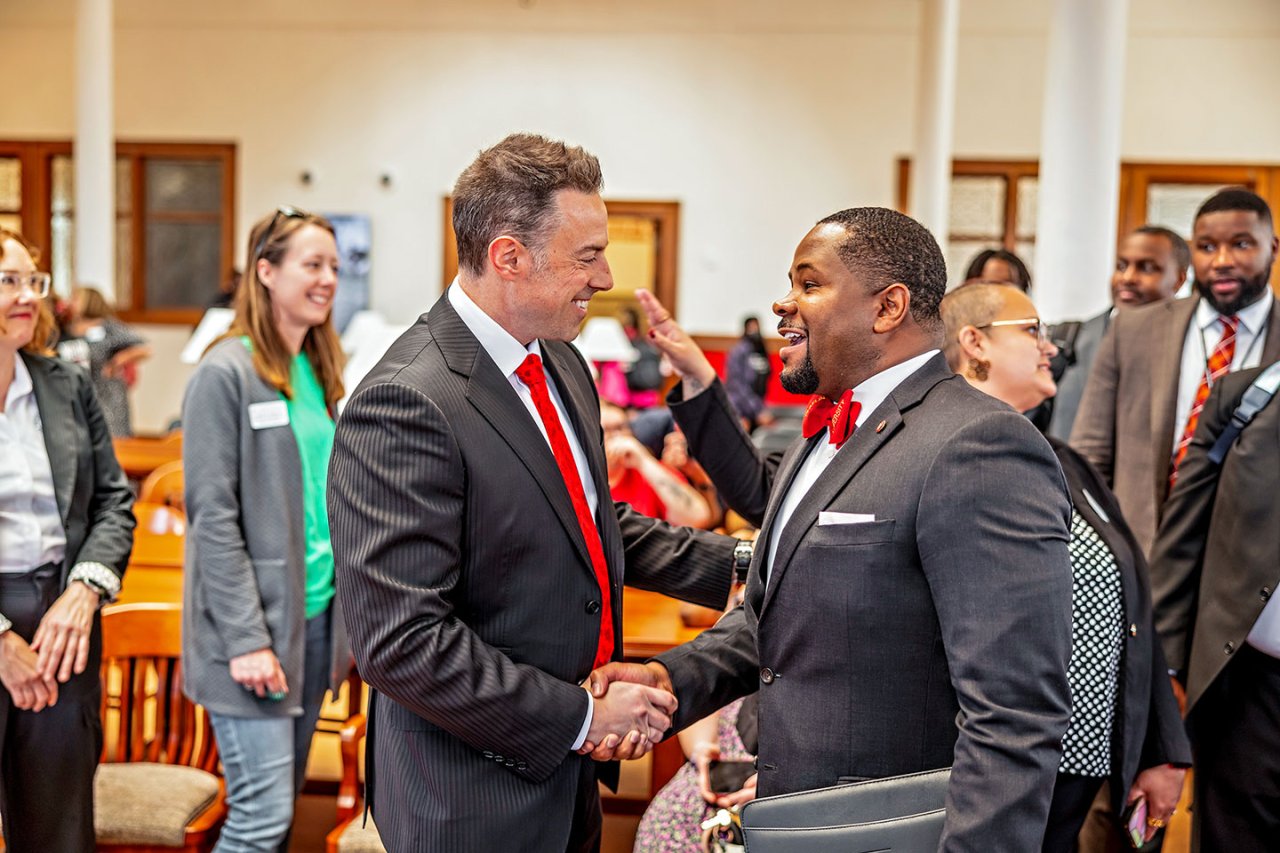
OWU has done significant work in recent years to strengthen our culture of inclusion and belonging. This work is a continual journey, not a destination. There is always room to improve. And one priority for us is to enhance our racial diversity among our students, faculty, staff, and executive leaders. Doing so will not happen overnight, but rather through a sustained, disciplined effort.
Over this academic year, a team of OWU faculty and staff members has dreamt about the possibilities to develop a special kind of institutional partnership— one that could help advance our goals and expand our horizons. We outlined criteria, researched institutions, contemplated value that we could offer, and produced a short list.
At the very top of that list was Claflin University in Orangeburg, SC, a fellow United Methodist-related institution, the oldest HBCU in the state, and a university that has much to teach us.
When I first spoke with President Dwaun Warmack, the excitement was mutual, and the partnership ideas came easily. When the conversation expanded to include more faculty and staff collaborators, the same was true. Together, we saw potential for student and faculty exchange, pipeline programs, shared resources, and joint-research and entrepreneurship projects.
Yesterday, President Warmack and I signed a groundbreaking sister school agreement. We're told it's one of the first and most comprehensive agreements between an HBCU and a Predominantly White Institution in American higher education.
Dawn Chisebe, Dr. Phokeng Dailey, the Rev. Dr. Myron McCoy, Jason Timpson, Sally Leber, and more led us from OWU.
Delaware County Promise
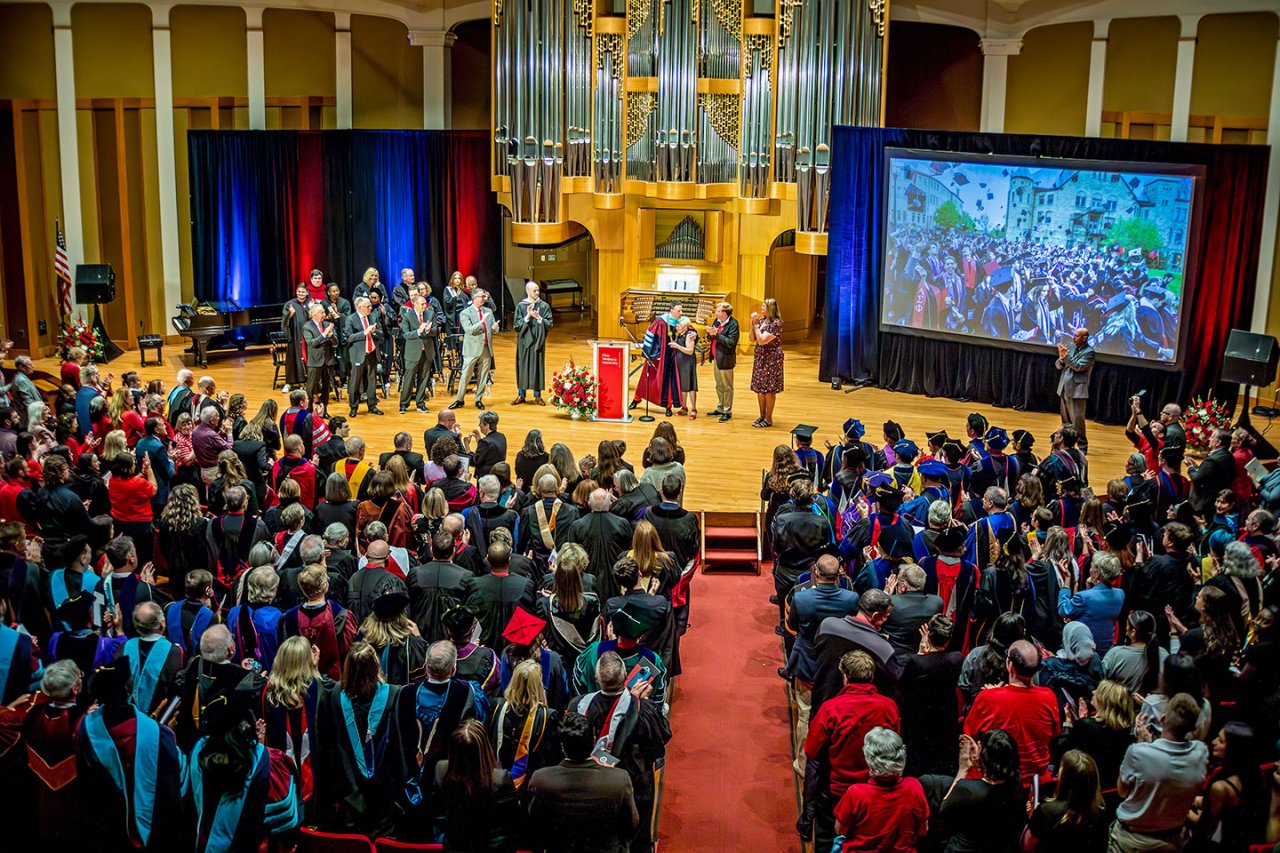
Our last announcement circles back to the beginning: our founding by this community.
Today, Delaware County is the healthiest, wealthiest, and fastest-growing county in Ohio and a rising star nationally. Unfortunately, many families of modest means don't share equally in that prosperity, and they face systemic challenges in improving their quality of life.
Higher education is one of the great social mobility agents that can unlock a better life, but only a small number of local students take advantage of their hometown four-year university. Many from disadvantaged backgrounds don't attend college at all.
Our data and discussions with counselors and families suggest why. Affordability—and perceptions of affordability—are the greatest threat to our youth's college attainment. Tackling this problem for talented students of modest means would boost social mobility for Delaware, catalyze economic development efforts, and change lives.
Drawn together by this realization, leaders from Delaware County, the Delaware County Foundation, our four school systems, generous donors led by Joe and Linda Diamond, and OWU have been brainstorming and problem-solving for many months. I ask them to join me on the stage at this time, with VP for Enrollment Adam Smith representing OWU. Thanks to the collaborations of these and many other individuals, we have two announcements to share.
First, we have a number of extraordinarily talented students from Delaware County—and their supporters—with us today. You're here because you're among the most academically talented students in Delaware County. You've worked hard. You've enriched us with your service, leadership, athletic prowess, and artistic abilities. You personify our ideals. We're proud of you, and we want you to be able to go world-class with your college education.
Thanks to the leadership on this stage and elsewhere, and thanks to the generosity of our benefactors, I'm proud to share that every single one of you is receiving a full-tuition scholarship to attend Ohio Wesleyan University! Congratulations!
Second, the Delaware community is ready to make one of the more consequential higher education-related announcements since this community built OWU.
Starting this fall, every single high school student who lives or goes to school in Delaware County, who earns a 3.5 GPA or higher, and whose families make a combined $100,000 or less—every single student who fits those three criteria—can now attend Ohio Wesleyan University, absolutely tuition-free.
We won't stop here. We won't stop now. We won't stop until we achieve our dream to remove cost as a barrier for every qualified student from Delaware County—the place that gave life to OWU.
The OWU Rebellion
Today is a celebration of who we are, all we've done, and the momentum we're building.
But we don't mistake celebration for victory. This isn't mission accomplished. This is mission launched. This is an Ohio Wesleyan rebellion of kindness, boldness, and innovation.
And while we all feel a sense of impatience to arrive immediately on the doorstep of our goals, let's remember that there's beauty in the work, the challenge, the struggle.
Shortly after the Battles of Lexington and Concord had begun, it's reported that Sam Adams and John Hancock, probably exhausted from the previous night's work, watched from a safe distance. In that moment, Adams is said to have turned to Hancock and declared, "It's a fine day."
"Very pleasant," Hancock agreed, noting the weather.
Adams needed to clarify. "What I mean," he said, is "this day is a glorious day for America."
It's a captivating sentiment, because the Declaration of Independence would have to wait another 14 months, and victory wouldn't come for another eight arduous years. But in that brief window of time, they must have felt a sense of relief, resolve, and rejuvenation after finally drawing a line in the sand and facing the Regulars head-on.
It makes one pause and consider exactly what we mean at OWU when we exclaim, "It's a great day to be a Bishop."
It is indeed a great day to be a Bishop. On our calendars, and in our hearts, it's April 19. Our Sulphur Spring is back. We know what's in our water. The rebellion is on! And independence calls the name Ohio Wesleyan University.
Inaguration Week Photos
